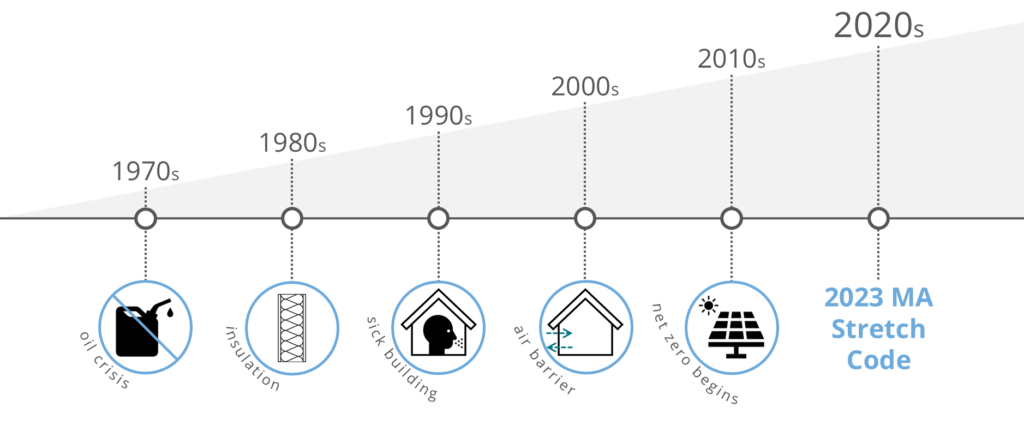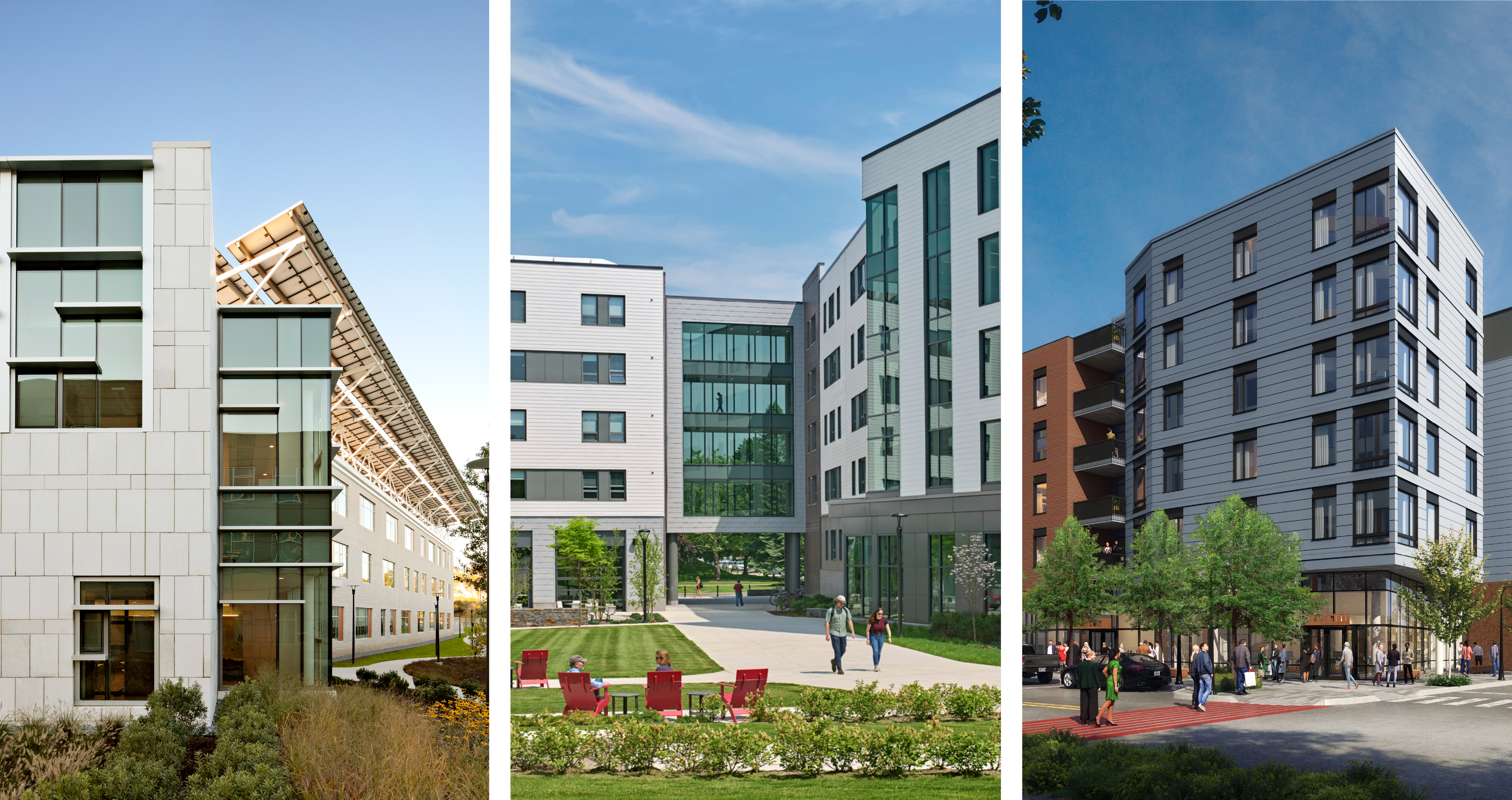The Evolution of Envelope Performance
The Evolution of Envelope Performance

The Evolution of Envelope Performance is the first in a multi-part series on building envelopes. In this series, we’ll explore the progression of envelope performance, envelope backstop fundamentals, thermal bridge derating, and envelope backstop calculation.

Evolution of Building Envelope Performance Timeline
In T.S. Eliot’s words, “We shall not cease from exploration, and the end of all our exploring will be to arrive where we started and know the place for the first time,” resonate profoundly with the evolution of building performance in Massachusetts.
The 1970s oil crisis marked the start of a journey toward energy efficiency, much like the 2023 Massachusetts Stretch Energy Code represents a return to foundational principles viewed through a more informed lens. Over the past 50+ years, we have explored insulation in the 1980s to improve building envelopes, confronted the unintended consequences of sick building syndrome in the 1990s, and introduced air barriers in the 2000s to enhance airtightness and moisture control. The 2010s ushered in ambitious Net Zero goals, exemplified by our design of the Health Professions and Student Services Building at North Shore Community College—an early leader in Massachusetts’ push for Net Zero emissions in the built environment. Today, with the latest energy codes, we find ourselves building on the fundamental challenge of energy conservation. We approach it with deeper knowledge at a much broader scale.
Recently, DiMella Shaffer, in collaboration with Building Envelope Technologies (BET), had the privilege to present at the annual Wagdy Anis Symposium. Both Lance Robson of BET and I took the opportunity to honor Wagdy Anis for his leadership in advancing the thermal envelope and his enduring influence on the building performance community. Wagdy and Lance were instrumental in founding what is now known as the Air Barrier Association of America (AABA). Early in my career, Wagdy’s guidance, particularly in deciphering energy code language and intent, inspired me to write a paper titled “The Death of Continuous Metal Z’s,” which underscored the critical need to address thermal bridging.
As the grid becomes greener and electrification advances, adopting a “Massachusetts thermal code” mindset, as coined by the Department of Energy Resources, is no longer optional—it’s essential. Failing to prioritize this approach will lead to significant costs, both economically and environmentally. As buildings become more energy efficient, the weakest links, such as thermal bridges, become increasingly apparent. Today presents a crucial opportunity to identify those bridges and break them!
Stay tuned for the next part of this series, which will dive deeper into the envelope backstop fundamentals.

